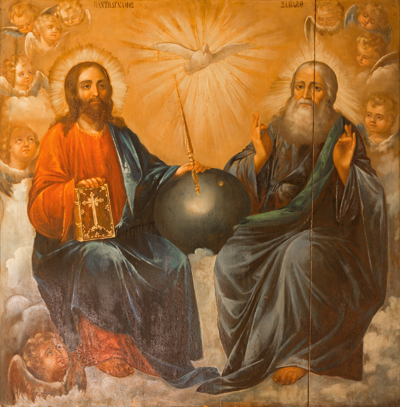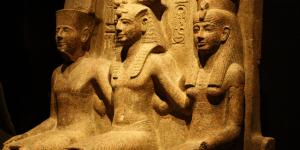You are here
What Unique Doctrines Did the Lord Reveal through the Book of Mormon?

2 Nephi 3:11
The Know
In a revelation given to the Prophet Joseph Smith in 1829, at the request of Martin Harris, the Lord declared to Joseph that “this generation shall have my word through you” (Doctrine and Covenants 5:10). The revelation was given in the context of the translation of the Book of Mormon, which represented God’s “words that are given through [Joseph]” (Doctrine and Covenants 5:11). The Book of Mormon represents a great outpouring of truth delivered to the world through the Prophet Joseph Smith.
The Book of Mormon restores plain and precious truths that were lost over the centuries. The prophet Nephi saw in a vision that many parts of the gospel that were “plain and most precious” and “the covenants of the Lord” would be lost and “taken away” (1 Nephi 13:26) from those original writings. The Lord had foreseen this and prepared the way for the Book of Mormon to restore and “make known the plain and precious things which have been taken away” (1 Nephi 13:40).
The Godhead
Some of the many “plain and precious things” that were restored through Joseph Smith by way of the Book of Mormon include truths about the Godhead. The Book of Mormon affirms the unity of the Godhead (see 3 Nephi 11:27), while, at the same time, emphasizing that its three members are separate and unique, each bearing record of the others.1 Some specific examples include:
- The Pre-Mortal Christ: Jesus Christ appeared, millennia before his birth, to the brother of Jared and explained, “Behold, this body, which ye now behold, is the body of my spirit; and man have I created after the body of my spirit; and even as I appear unto thee to be in the spirit will I appear unto my people in the flesh” (Ether 3:16).2
- The Resurrected Christ: The Book of Mormon provides further insight into the character and personality of the resurrected Jesus Christ. In 3 Nephi, Jesus as a resurrected being spends much time interacting with mortal people.3
- The Holy Ghost: In Nephi’s vision of the Tree of Life, he was guided by the “Spirit of the Lord.” Although he was a personage of Spirit, Nephi “beheld that he was in the form of a man … and he spake unto me as a man speaketh with another” (1 Nephi 11:11).4
The Plan of Salvation
Other “plain and precious truths” found clearly taught in the Book of Mormon pertain to God’s plan for his children. The phrase “plan of salvation,” and other similar phrases found in the Book of Mormon, are not found in the Bible. The Book of Mormon teaches that God had a plan prepared for the salvation and exaltation of mankind since before the foundation of the world (Alma 12:25).5
- Premortal Foreordination to Priesthood: Alma 13:3–10 explains that those who are appointed to callings in the priesthood were “called and prepared from the foundation of the world according to the foreknowledge of God.”6
- The Fall: In 2 Nephi 2, Lehi taught that if Adam and Eve didn’t partake of the forbidden fruit, all creation would have “remained in the same state in which they were after they were created,” unable to progress, and that Adam and Eve would have had no posterity. Lehi declared, “Adam fell that men might be; and men are, that they might have joy” (2 Nephi 2:25).7
- Agency: The principle that individuals have the power to act for themselves is an integral theme throughout the Book of Mormon.8 Lehi taught that “men are free according to the flesh … to choose liberty and eternal life … or to choose captivity and death” (2 Nephi 2:27).9
- The Atonement: One inspiring example of how the Book of Mormon illuminates our understanding of the Atonement is the declaration in Alma 7:11–13 that Jesus took upon Himself not only our sins but also our pains, sicknesses, and infirmities, so that He would “according to the flesh know how to succor his people.” 10
- The Afterlife: The Book of Mormon explains in greater clarity what will happen to mortals after they die. Alma explained that our spirits, after we die, will remain in a state of either happiness or darkness and fear until the resurrection (see Alma 40:9–15). In the resurrection, “every limb and joint shall be restored to its body … all things shall be restored to their proper and perfect frame” (v. 23). All will be resurrected (2 Nephi 9:22).11
Additional Examples
Many additional examples of the “plain and precious things” restored through Joseph Smith by way of the Book of Mormon could be listed here. Without being exhaustive, here are just a few more:
- Unambiguous Prophecies of Christ: For example, King Benjamin declared that the Messiah “shall be called Jesus Christ, the Son of God … and his mother shall be called Mary” (Mosiah 3:5–10).12
- The Gathering of Israel to Two Locations: The Book of Mormon is unique in ancient scripture in providing details regarding two gathering places for Israel: in the ancient holy land, and in the Americas.13
- Church Organization: The Book of Mormon became a handbook of instructions for organizing the Church in its earliest days. Moroni, for example, taught regarding the manner of bestowing the Holy Ghost (Moroni 2:2), ordaining to the priesthood (Moroni 3:1–3), administering the sacrament (Moroni 4, 5), and many other church governing principles.14
The Why
Elder LeGrand Richards declared, regarding the Prophet Joseph Smith, “As far as our records show, he has given us more revealed truth than any prophet who has ever lived upon the face of the earth.”15 Much of this revealed truth in the earliest years of the Restoration came through Joseph’s translation of the Book of Mormon.
The Book of Mormon preserves an ancient prophecy by the biblical patriarch Joseph, concerning the coming forth of God’s word to his posterity in the latter days. The Lord declared to ancient Joseph: “But a seer will I raise up out of the fruit of thy loins; and unto him will I give power to bring forth my word unto the seed of thy loins” (2 Nephi 3:11).
The latter-day Joseph would bring forth and translate the words of ancient Joseph’s descendants, the Nephites, and convince many of their truthfulness. In so doing, he would restore many of the “plain and precious things” of the gospel that had been taken away.
Modern readers who familiarize themselves with the unique doctrines that the Book of Mormon has restored to the world in these latter days can better appreciate the Lord’s mercy and love for His children. Additionally, they can more fully understand in what ways the Lord fulfilled His promise that “this generation shall have my word through” Joseph Smith.
Further Reading
Clyde J. Williams, “Plain and Precious Truths Restored,” Ensign, October 2006.
John A. Tvedtnes, “The Role of the Book of Mormon in the Restoration of the Church,” in The Most Correct Book: Insights from a Book of Mormon Scholar (Salt Lake City, UT: Cornerstone, 1999), 291–316.
Joseph Fielding McConkie, “A Comparison of Book of Mormon, Bible, and Traditional Teachings on the Doctrines of Salvation,” in The Keystone Scripture, ed. Paul R. Cheesman, S. Kent Brown, and Charles D. Tate Jr., The Book of Mormon Symposium Series, Volume 1 (Provo, UT: Religious Studies Center, Brigham Young University, 1988), 73–91.
Gilbert W. Scharffs, “Unique Insights on Christ from the Book of Mormon,” Ensign, December 1988.
Bruce R. McConkie, “This Generation Shall Have My Word through You,” Ensign, June 1980.
- 1. See Book of Mormon Central, “How Are the Book of Mormon’s Teachings about the Godhead Unique? (3 Nephi 11:27),” KnoWhy 266 (January 25, 2017); Book of Mormon Central, “Why is 3 Nephi Important for Understanding the Godhead? (3 Nephi 19:23),” KnoWhy 213 (October 20, 2016); Book of Mormon Central, “How is Christ Both the Father and the Son? (Mosiah 15:2),” KnoWhy 92 (May 4, 2016); David L. Paulsen and Ari D. Bruening, “The Social Model of the Trinity in 3 Nephi,” in Third Nephi: An Incomparable Scripture, ed. Andrew C. Skinner and Gaye Strathearn (Salt Lake City and Provo, UT: Deseret Book and Neal A. Maxwell Institute for Religious Scholarship, 2012), 191–233; Ari B. Bruening and David L. Paulsen, “The Development of the Mormon Understanding of God: Early Mormon Modalism and Other Myths,” FARMS Review of Books 13, no. 2 (2001): 123–132; Joseph Fielding McConkie, “God the Father,” in Book of Mormon Reference Companion, ed. Dennis L. Largey (Salt Lake City, UT: Deseret Book, 2003), 298. The Book of Mormon is clear that Jesus is the son of God the Father (1 Nephi 11:16–21; Alma 7:10), and that the Messiah is the Son of God (Alma 33:13–18), a doctrine never quite made clear in the Old Testament. See Book of Mormon Central, “Where Did Joseph Smith Get His Doctrinal Ideas about Christ? (Mosiah 4:7),” KnoWhy 261 (January 13, 2017).
- 2. This declaration made clear that mankind was made in the image of the spirit body of the pre-mortal Jehovah. It also clarifies that Jehovah is to be identified with, and was also similar in appearance to, the mortal and resurrected Jesus Christ. See also Mosiah 3:8; 3 Nephi 15:5.
- 3. See Book of Mormon Central, “Why Did Jesus Minister to the People One by One? (3 Nephi 17:21),” KnoWhy 209 (October 14, 2016); Book of Mormon Central, “Why Is 3 Nephi Sometimes Called the ‘Fifth Gospel’? (3 Nephi 27:21),” KnoWhy 222 (November 2, 2016); Book of Moron Central, “Why Has 3 Nephi Been Called the Crown Jewel of the Book of Mormon? (3 Nephi 17:17),” KnoWhy 210 (October 17, 2016); Gilbert W. Scharffs, “Unique Insights on Christ from the Book of Mormon,” Ensign, December 1988, online at lds.org.
- 4. Joseph Fielding McConkie and Robert L. Millet commented, “If, indeed, here the Holy Ghost was Nephi’s guide and teacher, this occasion is of tremendous significance, for it is the only scriptural occasion wherein the Holy Ghost makes a personal appearance to man.” Joseph Fielding McConkie and Robert L. Millet, Doctrinal Commentary on the Book of Mormon, 4 vols. (Salt Lake City, UT: Bookcraft, 1987), 1:77. McConkie and Millet further noted that Nephi’s account was supported by Joseph Smith’s teaching that “The Holy Ghost is a personage, and is in the form of a personage” (p. 1:77).
- 5. See Book of Mormon Central, “When Does the Book of Mormon First Talk about the Plan of Salvation? (2 Nephi 9:6),” KnoWhy 33 (February 15, 2016); Book of Mormon Central, “Why Does Alma Mention ‘the Plan’ Ten Times in His Words to Corianton? (Alma 42:13),” KnoWhy 150 (July 25, 2016); Book of Mormon Central, “Where Can You Best Learn About God’s Plan of Salvation? (Alma 24:14),” KnoWhy 272 (February 8, 2017). Gerald N. Lund, “Plan of Salvation, Plan of Redemption,” in Encyclopedia of Mormonism, ed. Daniel H. Ludlow, 4 vols. (New York, NY: Macmillian Publishing, 1992), 3:1088–1091; 2 Nephi 9:6, 13; 11:5; Jarom 1:2; Alma 12:25; 24:14; 34:9; 42:5–8.
- 6. Joseph Smith later taught that “Every man who has a calling to minister to the inhabitants of the world was ordained to that very purpose in the Grand Council of heaven before the world was.” Teachings of the Prophet Joseph Smith, ed. Joseph Fielding Smith (Salt Lake City, UT: Deseret Book, 1938), 365. See also Joseph F. McConkie, "Premortal Existence, Foreordinations and Heavenly Councils," in Apocryphal Writings and the Latter-day Saints, ed. C. Wilfred Griggs (Provo, UT: Religious Studies Center, Brigham Young University, 1986), 173–198.
- 7. Adam and Eve had to be expelled from the Garden; otherwise, “if Adam had put forth his hand immediately [after partaking of the fruit], and partaken of the tree of life, he would have lived forever … having no space for repentance; yea … and the great plan of salvation would have been frustrated” (Alma 42:5). This life is a “state of probation” (2 Nephi 2:21), “a time to prepare to meet God” (Alma 12:24). See also 2 Nephi 9:6; Mosiah 3:11, 19; 4:7; 16:4; Alma 34:9, 32; 42:1–14; Helaman 14:16; Mormon 9:12; Book of Mormon Central, “Why Did Lehi Teach that the Fall Was Necessary? (2 Nephi 2:22–25)” KnoWhy 269 (February 1, 2017); Book of Mormon Central, “What Are the Origins of Lehi’s Understanding of the Fall? (2 Nephi 2;25),” KnoWhy 28 (February 8, 2016).
- 8. Elder Dallin H. Oaks stated that the Book of Mormon “provides some of our most important doctrinal insights on the significance of free agency in the gospel plan.” Dallin H. Oaks, “Free Agency and Freedom,” in Second Nephi, The Doctrinal Structure, ed. Monte S. Nyman and Charles D. Tate Jr., The Book of Mormon Symposium Series, Volume 3 (Provo, UT: Religious Studies Center, Brigham Young University, 1989), 1.
- 9. Lehi taught that “the Lord God gave unto man that he should act for himself” (2 Nephi 2:16). See also Alma 41:7; 42:9–15; Helaman 14:29–31; Moroni 7:16–19.
- 10. Elder Jeffrey R. Holland declared: “Surely the most plain and precious of all truths lost from the Bible, particularly the Old Testament, are the clear and unequivocal declarations of the mission of Jesus Christ, his foreordained role as Messiah and Savior of the world … Thus the Book of Mormon’s highest purpose is to restore to the universal family of God that crucial knowledge of Christ’s role in the salvation of every man, woman, and child.” Jeffrey R. Holland, Christ and the New Covenant: The Messianic Message of the Book of Mormon (Salt Lake City, UT: Deseret Book, 1997), 6–7. See Clyde J. Williams, “Plain and Precious Truths Restored,” Ensign, October 2006 online at lds.org. See also 2 Nephi 9:5–24; Mosiah 3:11–18; 4:6–8; 13:27–32; Alma 34:8–16; 42:11–30; 3 Nephi 11:14; Book of Mormon Central, “Why Must There Be an Infinite and Eternal Sacrifice? (Alma 34:12),” KnoWhy 142 (July 13, 2016); Book of Mormon Central, “Why Does King Benjamin Emphasize the Blood of Christ? (Mosiah 4:2),” KnoWhy 82 (April 20, 2016).
- 11. See also 1 Nephi 15:35; 2 Nephi 9:10–13, 22; Alma 11:41–45.
- 12. See 1 Nephi 11:13–18; 19:8; 2 Nephi 2:6–9; 25:12–19; Mosiah 15:1–9; Alma 7:10–12; Helaman 14:2. See also D. Kelly Ogden and R. Val Johnson, “All the Prophets Prophesied of Christ,” Ensign, January 1994, online at lds.org; Book of Mormon Central, “Why Did Samuel Make Such Chronologically Precise Prophecies? (Helaman 13:5),” KnoWhy 184 (September 9, 2016); Book of Mormon Central, “Did Pre-Christian Prophets Know about Christ? (1 Nephi 10:17),” KnoWhy 12 (January 15, 2016); Book of Mormon Central, “Why Does an Angel Reveal the Name of Christ to Jacob? (2 Nephi 10:3),” KnoWhy 36 (February 18, 2016).
- 13. 2 Nephi 10 explains how the descendants of Lehi would inherit and be gathered to the Americas, along with those Gentiles who would believe and join them. This land would be a New Jerusalem, one of two holy cities that would exist at Christ’s coming (3 Nephi 20:22; Ether 13:3–6, 10). See Book of Mormon Central, “Why Do the Prophets Speak of Multiple Jerusalems? (Ether 13:3–6),” KnoWhy 247 (December 7, 2016).
- 14. See Williams, “Plain and Precious Truths Restored.” See also Book of Mormon Central, “Was the Book of Mormon Used as the First Administrative Handbook? (3 Nephi 27:21–22),” KnoWhy 72 (April 6, 2016); John W. Welch, “The Book of Mormon as the Keystone of Church Administration,” Religious Educator, 12, no. 2 (2011): 85. Much of the administrative information in Doctrine and Covenants 20 is drawn from the Book of Mormon. See Scott H. Faulring, “An Examination of the 1829 ‘Articles of the Church of Christ’ in Relation to Section 20 of the Doctrine and Covenants,” BYU Studies 43, no. 4 (2004): 57–91; Book of Mormon Central, “Why Did the Lord Quote the Book of Mormon When Reestablishing the Church? (3 Nephi 11:24),” KnoWhy 282 (March 3, 2017).
- 15. LeGrand Richards, “Call of the Prophets,” Ensign, May 1981, 33.
KnoWhy Citation
Related KnoWhys
Subscribe
Get the latest updates on Book of Mormon topics and research for free








